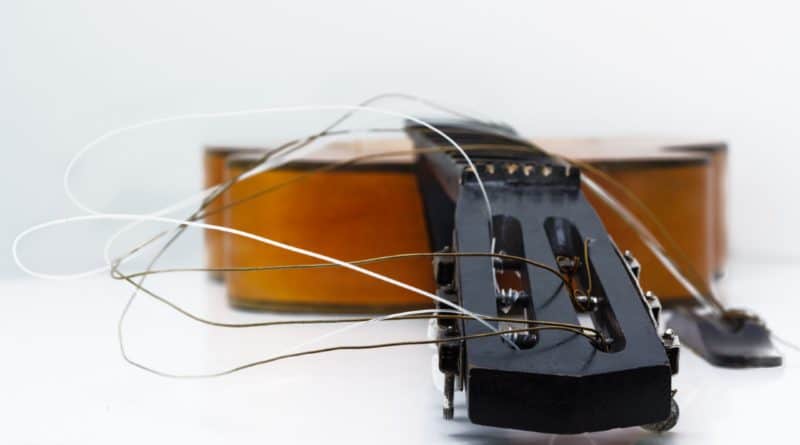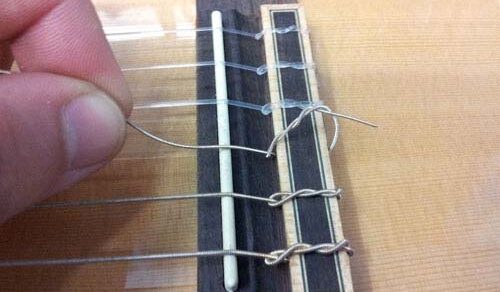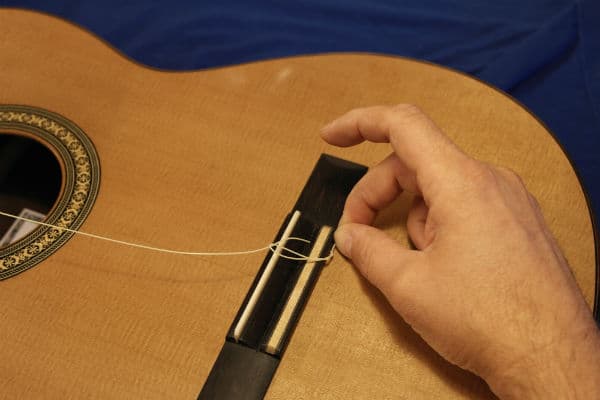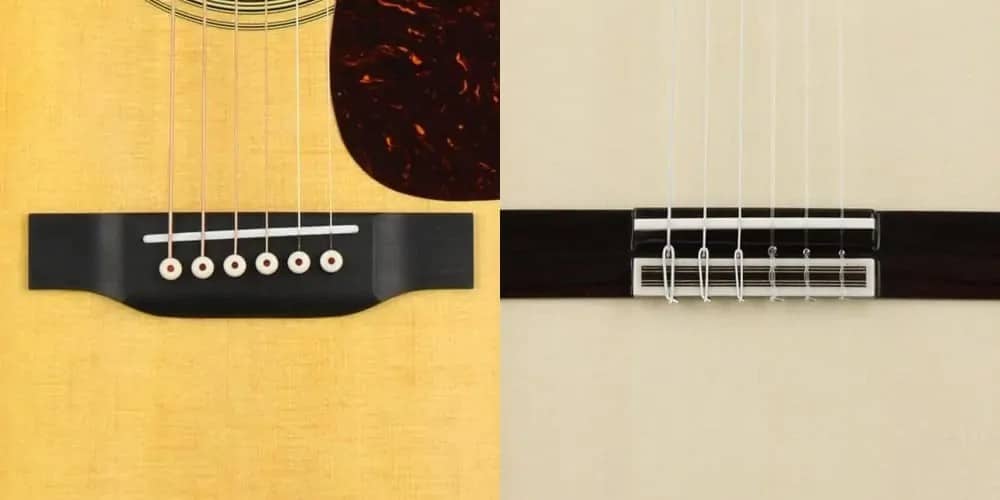Contents
Artists have endless creativity, be it in their style of singing or their instrument. As a matter of fact, there’s a very popular question on re-stringing acoustic guitar with nylon strings. Can you put nylon strings on a steel-string guitar? The straight answer is YES, but there are risks. What are these? Let’s discuss it in detail in the following sections.
Restringing a guitar isn’t always a daunting task. However, when you think of putting nylon strings to your steel-string guitar, you need to do it right. If you are willing, we’ll give you some tips on doing it right. Likewise, we’ll also explain to you the possible risks and the things you need to bear in mind when changing your strings.
Why You Want to Re-string Your Steel String Guitar?
It’s true that nylon strings are a cheaper alternative to traditional gut strings. More so, if you love the soft and warm tone of classical guitars and don’t like the bright sound of steel strings, you’ll be tempted to switch to nylon strings.

In addition, some beginners will definitely want to choose nylon strings over the steel strings because they don’t cause pain. Nylon strings are softer and have lower tension. Hence, it’s not very challenging to fret – your fingertips won’t sore as you take your first few guitar lessons.
Things to Know When Switching to Nylon Strings
As mentioned, there are possible risks when you decide to restring your steel-string guitar with nylon strings. You should be aware of these before going into the process.
Unstable Neck Tension
One stress that your acoustic guitar may experience when you switch to nylon strings is the change of the neck tension. The obvious difference between steel and nylon strings is the tension they put on the neck of the guitar. Steel strings put more tension on the neck than nylon. So, in case you’ll put nylon on your steel-string guitar, it’ll experience a lack of stress.

Even if you’ll use a mix of nylon and steel (three strings each for a six-string guitar), it’s still not good. Nylon strings are loose, while steel needs to be wound tighter to tune them.
Nylon String Tuning is Unstable
Tuning steel strings isn’t as frequent as nylon strings. Because nylon is very susceptible to changes in temperature and humidity, it’ll easily go out of tune. If it’s okay with you to tune your guitar more often than you tune before, you can use nylon strings.
Can’t Use Guitar Pick on Nylon Strings
If you are a guitarist who is fond of using guitar picks, you might need some adjustments when you switch to nylon strings. You can’t use a guitar pick here, so you might want to learn to fingerpick right now. Guitar picks can wear out nylon strings easily, hence, you can only fingerpick with long nails (or fake nails).
Hard to Tie the Nylon Strings
As you know, steel strings have a ball-ends, which can easily be inserted into the hole of the bridge. They are kept in place using peg pins and attached to the tuner on the other end. Nylon strings don’t have ball end, or at least, previously, until Ernie Ball and some other string manufacturers made them.

If you are using the traditional nylon strings, you need to make a few modifications to the bridge in order to tie the strings. Don’t try to do the modifications yourself unless you are a professional luthier.
So, You Still Want to Do It?
It’s not new that some guitarists want to try nylon strings on their steel-string acoustic guitar. After all, nylon strings add a different vibe to your music, and it encompasses a wide range of tones. This trend can already be traced back to the urban folk revival in the 50s and 60s.
If you are all ready to change your strings, make sure that you are also ready to change your creativity. You need to learn fingerpicking now instead of using a guitar pick. Aside from this obvious adjustment, you need to be aware of the following:
1. String buzz
2. Action will feel too low
3. External E strings may slip off the edge when fretting notes
For the first two problems, you can alleviate them a bit by simply releasing your truss rod. For the third, you might want to have your guitar properly set up by a professional.
If you are only making the switch because you want to try and not really serious about it, perhaps, just endure these few problems. Only make irrevocable changes to your steel string guitar if you are 100% sure that you’ll use it moving forward.

Alternatively, you can check out some custom-made or crossover guitars. These instruments are designed to help you benefit from both a steel-string and nylon-string classic guitar. And, as mentioned, you don’t need to make much modifications to your bridge when switching to nylon strings because ball-end nylon strings are now available.
How About Steel Strings on Classical Guitars?
Definitely No. Classical guitars can’t handle the tension needed for the steel strings to stay in tune. If you insist, you will put your guitar into a higher string load tension, which could snap the neck of your guitar. Additionally, the body tops and the bracing of classical guitars are completely different from steel-string guitars.
Conclusion
Trying to do some experiment on your guitar, especially on switching strings is possible, but has associated risks. Can you put nylon strings on a steel-string guitar, you may ask? The answer is YES, but you must be willing to take risks.
This article has already laid all the information you need if you really want to get nylon strings for your steel-string guitar. While it’s now less complicated with the ball-end nylon strings, it’s still not ideal to do this kind of switch.
One reason would be the unstable tension that the neck of your guitar experience when using nylon strings. Since nylon is soft, changes in temperature and humidity make the string out of tune – you need to do guitar tuning often. While there are risks, it’s possible and worth a try. Just make sure to do the restringing with a professional.

Hi music fan! I am Jeff. Hope that you enjoy some stuff I shared here in my personal blog.
About myself, Currently I am in charging as Artist Manager/Music Supervisor at 72 Music Management. I did managed album to Grammy Award in 2017 with 7 Nominations from 2014-2020 and had the opportunities to work with : A.J. Croce, Blind Boys of Alabama, Bobby Rush, Dom Flemons, Dustbowl Revival, Sarah Grace
Governor of the Memphis Chapter of The Recording Academy is one of a award that I am lucky to achieved.
